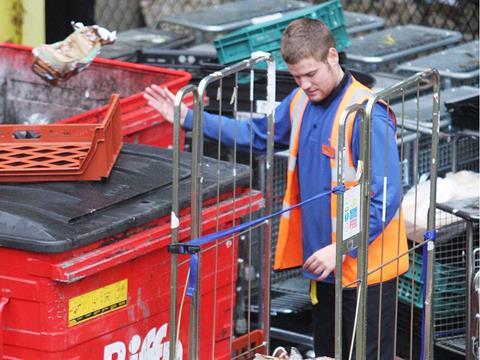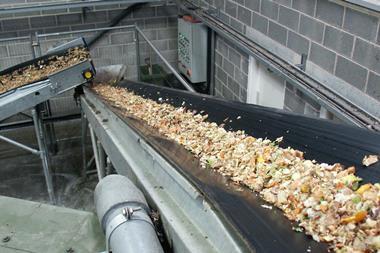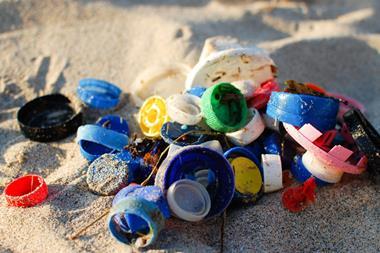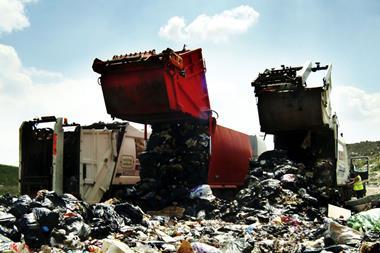
The ink was barely dry on this week’s industry commitment to slash food waste by 20% in the next decade before some were saying it should have gone further.
Thanks in part to less than neighbourly timing on behalf of the Scottish government, which last month pledged to cut food waste by a third over the same period, some asked why supermarkets and suppliers, alongside the raft of new partners backing Wrap’s landmark Courtauld 2025 agreement, were not as ambitious as the SNP.
Yet considering how close the industry came to missing its 2015 food waste reduction targets, some might argue it is more appropriate to ask if Wrap has bitten off more than it can chew. So can Courtauld 2025 deliver on its promises?
The agreement pledges to cut the UK’s waste bill by £20bn within 10 years, with a 20% per capita reduction in greenhouse gas from food and drink consumption in the UK thrown into the mix - plus a yet-to-be- agreed deal on water use.
It will seek to achieve this against a backdrop of government funding cuts, which meant Wrap had to secure charitable status to survive. Moreover, its largely untried ‘whole supply chain’ approach is so wide-ranging even some of the signatories privately admit they do not yet know how the figures will stack up.
Courtauld 2025 is seeking a reduction twice that achieved under the old-style Courtauld Commitment, which saw food waste in the supply chain fall by 10% from 2005 to 2015.
The new version, plans for which were first revealed by The Grocer in November 2014, is light years from the original, signed in 2005 at Somerset House by just 13 retailers, in essence as an attempt to cut unnecessary packaging.
Courtauld 2025 already boasts 100-plus signatories, including all the major food retailers and a who’s who of suppliers.
For some, including Lidl and Birds Eye, this is the first involvement with Courtauld; and, alongside local authorities representing almost half the UK population and a raft of NGOs, the agreement also for the first time unites grocery and the hospitality sector, which since 2012 had its own Wrap waste reduction plan. But it’s not just new names like Bidvest, KFC and Pizza Hut that are different this time - the entire process is. Wrap is setting out to embed sustainable principles and practices into design, buying and sourcing, as well as finding new ways to use surplus food.
Varied and tailored support
Wrap is promising milestone reports on waste in UK production, manufacture, distribution, retail, hospitality and foodservice, in 2018, 2021 and finally 2025. But it will also give more personalised support to individual signatories.
They will get tailored support, including confidential reviews putting the spotlight on hotspots in supply chain waste, with bespoke targets, KPIs and help on implementation.
Yet it is also promising that, from 2018, Courtauld 2025 will be updated to include information about the amount of pre-farmgate waste, acknowledging that 2004 figures from the Environment Agency, which estimate this at three million tonnes, are out of date.
“We’re delighted Courtauld 2025 will measure the mountains of food waste on farms by 2018,” says Martin Bowman of the Stop the Rot campaign. “You can’t manage what you don’t measure.”
It is not the only figure Wrap is unsure of. It is also conducting a massive piece of work amid fears the post-farmgate figures are also out of date. Current estimates suggest 250,000 tonnes of food are wasted by retailers each year, but a massive 3.9 million tonnes by suppliers - again a figure that could be an underestimate. “I’m not clear exactly how everything will be reported,” says one signatory to the agreement.
Dr Richard Swannell, director of sustainable food systems at Wrap, admits Courtauld 2025 is going to be “more challenging” than its predecessor. He admits the scale of the agreement is such that, if handled badly, it could be unmanageable. “We will have to target those areas which have the biggest impact. It’s about having the big brands, the big producers and the big retailers,” he says.
This suggests the onus, despite the mass of new names on the list of signatories, will fall very much on the big retailers and suppliers in the food industry. Already, companies such as Nestlé, Sainsbury’s and The Co-operative Group have been pioneering pathfinder studies under Wrap’s Product Sustainability Forum, a project that looks set to have a big influence on Courtauld 2025.
Seeking to find the key areas of food waste in the supply chain, these have already shown the potential for huge reductions with relatively simple changes to production.
Yet while the gains from such projects, if they are shared, are potentially huge, they don’t necessarily make their mark with a public looking for eye-catching stats. The recent Scottish announcement is far less detailed but, as a sign of intent, some claim it has more impact. “This is a government which is prepared to spend money on things such as public information campaigns on waste, which England has shown it’s not,” says one Courtauld signatory.
In the rest of the UK, it’ll be squarely down to Wrap - and its long list of Courtauld backers - to make a difference on waste.
2025 pledges
- 20% cut in food and drink waste arising in the UK
- 20% cut in greenhouse gas from food & drink consumed in the UK
- A yet-to-be-agreed cut in impact associated with water use
- Sustainable principles to be embedded into design, buying and sourcing of food
- Entire supply chains to help produce more goods using fewer resources
- Influence consumer consumption behaviour
- Find ways to make use of surplus and waste food



















No comments yet